Lee Friedlander, né en 1934, Friedlander commence sa carrière de photographe en free-lance pour la presse. Grâce à une bourse du Guggenheim Lee Friedlander va passer à une approche résolument artistique de la photographie.
Actualité purpose 9 - summer 2009 : at work Actualité purpose 9 - été 2009 : au travail Livre Edward Hopper & Company: Hopper's Influence on Photography Livre Friedlander de Richard Benson Livre Lee Friedlander: Self Portrait Vente Ventes : Photographie Moderne et Contemporaine - 25 mai 2016 Vente La photo à l'honneur dans une vente aux enchères à l'Hôtel Drouot Vente Vente de photographies classiques chez Christie's : Man Ray à l'honneur Vente Auction Photographs at Sotheby's Vente Photobooks auction / Livres de photographies Festival FRAC Aquitaine 2016 Festival Opening of the 32nd edition of The AIPAD Photography Show New York Festival Milan Image Art Fair 2011 Festival Cheminements 2008 - Le paysage comme terrain de jeu Exposition «Window Dressing» Exposition The exhibition PORTRAITS Exposition Exposition : « Autophoto » à la Fondation Cartier pour l'Art Contemporain Exposition Exhibition : « The new cars, 1964 » by Lee Friedlander Exposition Exposition : « Family Pictures » dans la collection de la MEP Exposition Exposition : « Auto Photo » à la Fondation Cartier pour l'Art Contemporain Exposition Self and Family - Lee Friedlander Exposition Exposition : « Autoportraits » Exposition Jazz Lives: The Photographs of Lee Friedlander and Milt Hinton Exposition Thirty Years Thirty-One Photographers Exposition A Great Crowd Had Gathered: JFK in the 1960s Exposition Mannequin - Lee Friedlander Exposition Collective Exhibition « Portraits of the photographer » in Berlin Exposition « Au bonheur des fleurs » au Pavillon Populaire Exposition Photographies modernes et contemporaines à l'Hôtel Drouot Exposition Les photographes du New York Times Magazine à FOAM Exposition The New York Times Magazine Photographs at the FOAM Exposition Les "true stories" de la photographie américaine Exposition Inspiration Photomaton au Musée de l'Elysée Exposition Art and America around 1970 - Hyper Real Exposition Great Photographs of the 20th Century - Hasted Kraeutler Exposition Street Photography Selected Works from Six Decades Exposition From the Cité internationale des Arts to the Maison Européenne de la Photographie Exposition De la Cité internationale des Arts à la Maison Européenne de la Photographie Exposition Summer Loves Exposition On the Road. Le voyage ce n'est pas arriver, c'est partir Exposition Complete Flowers - Lee Friedlander Exposition Quelques Chefs-d'oeuvre incontestables ou inattendus - A la galerie Box, Bruxelles Exposition On the Road - Maison Européenne de la Photographie Exposition LE PARADIS, OU PRESQUE LOS ANGELES 1865-2008 Exposition Lee Friedlander - New Mexico Exposition The New York School Exposition Circuler partager orienter Exposition Lee Friedlander - 50 ans de photographie Exposition Lee Friedlander Photographies from 1956 till 2004 Modifier l'image
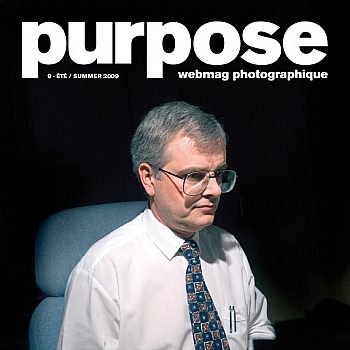 Robert Doisneau Travailleurs
Maurice Broomfield Industry
Lee Friedlander At Work
Brian Ulrich Copia
Nigel Shafran Supermarket checkouts / Supermarket portraits
David Moore Office
Darin Mickey Stuff I Gotta Remember Not to Forget
Emmanuelle Léonard Les Travailleurs
Barbara Pellerin Barentin, 76, rue Auguste Badin
Anne Favret & Patrick Manez Chambre avec vues
Thomas Kneubühler Absence
Gérard Dalla Santa Gestes
David Mozziconacci Nyc (Not Yet Completed) - Récupération
Henk Wildschut Shelters
Raphaël Dallaporta & Ondine Millot Esclavage domestique
musique de / music by Eric Cordier, Jim Meneses,
Alva Noto, Francesco Cavaliere, David Smith
Work is a major issue in every society. ...
Robert Doisneau Travailleurs
Maurice Broomfield Industry
Lee Friedlander At Work
Brian Ulrich Copia
Nigel Shafran Supermarket checkouts / Supermarket portraits
David Moore Office
Darin Mickey Stuff I Gotta Remember Not to Forget
Emmanuelle Léonard Les Travailleurs
Barbara Pellerin Barentin, 76, rue Auguste Badin
Anne Favret & Patrick Manez Chambre avec vues
Thomas Kneubühler Absence
Gérard Dalla Santa Gestes
David Mozziconacci Nyc (Not Yet Completed) - Récupération
Henk Wildschut Shelters
Raphaël Dallaporta & Ondine Millot Esclavage domestique
musique de / music by Eric Cordier, Jim Meneses,
Alva Noto, Francesco Cavaliere, David Smith
Work is a major issue in every society. ...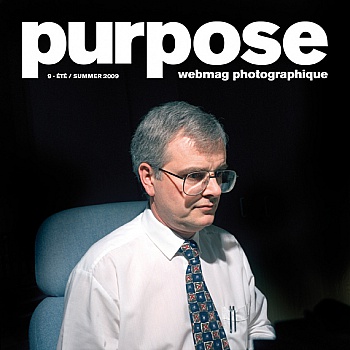 Robert Doisneau Travailleurs
Maurice Broomfield Industry
Lee Friedlander At Work
Brian Ulrich Copia
Nigel Shafran Supermarket checkouts / Supermarket portraits
David Moore Office
Darin Mickey Stuff I Gotta Remember Not to Forget
Emmanuelle Léonard Les Travailleurs
Barbara Pellerin Barentin, 76, rue Auguste Badin
Anne Favret & Patrick Manez Chambre avec vues
Thomas Kneubühler Absence
Gérard Dalla Santa Gestes
David Mozziconacci Nyc (Not Yet Completed) - Récupération
Henk Wildschut Shelters
Raphaël Dallaporta & Ondine Millot Esclavage domestique
musique de / music by Eric Cordier, Jim Meneses,
Alva Noto, Francesco Cavaliere, David Smith
Dans toute société le ...
Robert Doisneau Travailleurs
Maurice Broomfield Industry
Lee Friedlander At Work
Brian Ulrich Copia
Nigel Shafran Supermarket checkouts / Supermarket portraits
David Moore Office
Darin Mickey Stuff I Gotta Remember Not to Forget
Emmanuelle Léonard Les Travailleurs
Barbara Pellerin Barentin, 76, rue Auguste Badin
Anne Favret & Patrick Manez Chambre avec vues
Thomas Kneubühler Absence
Gérard Dalla Santa Gestes
David Mozziconacci Nyc (Not Yet Completed) - Récupération
Henk Wildschut Shelters
Raphaël Dallaporta & Ondine Millot Esclavage domestique
musique de / music by Eric Cordier, Jim Meneses,
Alva Noto, Francesco Cavaliere, David Smith
Dans toute société le ...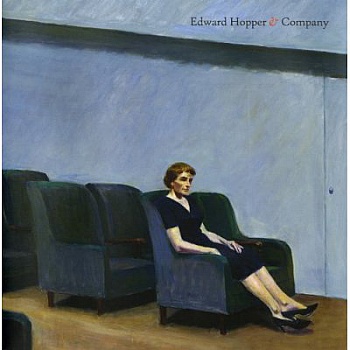 British author Geoff Dyer once surmised that Edward Hopper "could claim to be the most influential American photographer of the twentieth century- even though he didn't take any photographs." What we see in Hopper's paintings when we look at them through the lens of photography, and how, in turn, the language of photography was influenced by Hopper's work, are the twin subjects of Edward Hopper & Company. Thoughtfully curated and edited by the respected San Francisco gallerist Jeffrey Fraenkel, seven paintings and three drawings by Hopper are here thematically interlaced with carefully selected photographs by eight of the masters of twentieth-century photography: Robert Adams, Diane Arbus, Harry Callahan, William Eggleston, Walker Evans, Robert Frank, Lee Friedlander and Stephen Shore. As Fraenkel writes in...
British author Geoff Dyer once surmised that Edward Hopper "could claim to be the most influential American photographer of the twentieth century- even though he didn't take any photographs." What we see in Hopper's paintings when we look at them through the lens of photography, and how, in turn, the language of photography was influenced by Hopper's work, are the twin subjects of Edward Hopper & Company. Thoughtfully curated and edited by the respected San Francisco gallerist Jeffrey Fraenkel, seven paintings and three drawings by Hopper are here thematically interlaced with carefully selected photographs by eight of the masters of twentieth-century photography: Robert Adams, Diane Arbus, Harry Callahan, William Eggleston, Walker Evans, Robert Frank, Lee Friedlander and Stephen Shore. As Fraenkel writes in...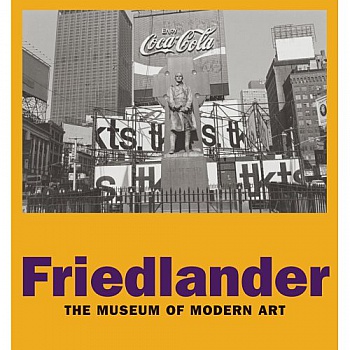 Lee Friedlander is one of the most important of the 1960s generation of photographers for whom the posture of disinterested objectivity served as a vehicle for passionate personal inquiries. His large body of work--he most often produces extended series of pictures on a chosen theme, then publishes them in book form--is broad in subject matter and supple and complex in style, and focuses on what he calls America's "social landscape." At the same time, he has pursued a playful dialogue with artistic tradition--as though open-eyed curiosity about the world, and a sophisticated taste for the wiles of picture-making were one and the same thing. Lee Friedlander takes a deep critical look at Friedlander's abundantly productive career. Including over 500 photographs grouped by series, and an incisive essay by Peter Ga...
Lee Friedlander is one of the most important of the 1960s generation of photographers for whom the posture of disinterested objectivity served as a vehicle for passionate personal inquiries. His large body of work--he most often produces extended series of pictures on a chosen theme, then publishes them in book form--is broad in subject matter and supple and complex in style, and focuses on what he calls America's "social landscape." At the same time, he has pursued a playful dialogue with artistic tradition--as though open-eyed curiosity about the world, and a sophisticated taste for the wiles of picture-making were one and the same thing. Lee Friedlander takes a deep critical look at Friedlander's abundantly productive career. Including over 500 photographs grouped by series, and an incisive essay by Peter Ga...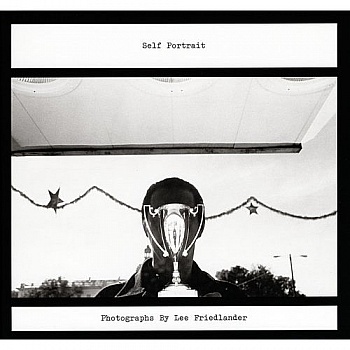 Lee Friedlander's surreal sensibility is on full display in this set of photographs, originally published in 1970. Here Friedlander focuses on the role of his own physical presence in his images. He writes: "At first, my presence in my photos was fascinating and disturbing. But as time passed and I was more a part of other ideas in my photos, I was able to add a giggle to those feelings." Here readers can witness this progression as Friedlander appears in the form of his shadow, or reflected in windows and mirrors, and only occasionally fully visible through his own camera. In some photos he visibly struggles with the notion of self-portraiture, desultorily shooting himself in household mirrors and other reflective surfaces. Soon, though, he begins to toy with the pictures, almost teasingly inserting his shadow...
Lee Friedlander's surreal sensibility is on full display in this set of photographs, originally published in 1970. Here Friedlander focuses on the role of his own physical presence in his images. He writes: "At first, my presence in my photos was fascinating and disturbing. But as time passed and I was more a part of other ideas in my photos, I was able to add a giggle to those feelings." Here readers can witness this progression as Friedlander appears in the form of his shadow, or reflected in windows and mirrors, and only occasionally fully visible through his own camera. In some photos he visibly struggles with the notion of self-portraiture, desultorily shooting himself in household mirrors and other reflective surfaces. Soon, though, he begins to toy with the pictures, almost teasingly inserting his shadow... Le 25 mai prochain, venez découvrir la vente organisée par Viviane Esders Photographie : « Photographie Moderne et Contemporaine »
© Gérard Rancinan "«Batman family girls», 2011 (estimation 35 000-45 000 €)
Hôtel Drouot - Paris - Salle 6 - 14h
Maître Yann Le Mouel, Viviane Esders Expert
© Berenice Abbott, New York by night, 1932 (estimation 15 000-25 000 €)
Expositions publiques
Mardi 24 mai 11h-18h
Mercredi 25 mai 11h-12h
Consultez le catalogue et enchérissez sur le site internet....
Le 25 mai prochain, venez découvrir la vente organisée par Viviane Esders Photographie : « Photographie Moderne et Contemporaine »
© Gérard Rancinan "«Batman family girls», 2011 (estimation 35 000-45 000 €)
Hôtel Drouot - Paris - Salle 6 - 14h
Maître Yann Le Mouel, Viviane Esders Expert
© Berenice Abbott, New York by night, 1932 (estimation 15 000-25 000 €)
Expositions publiques
Mardi 24 mai 11h-18h
Mercredi 25 mai 11h-12h
Consultez le catalogue et enchérissez sur le site internet....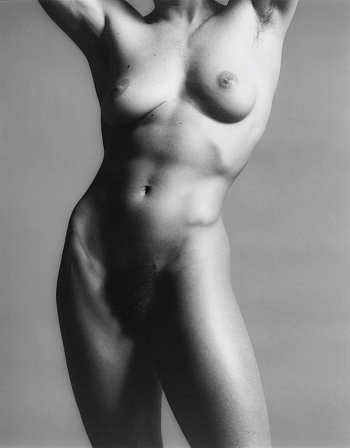 L'Hôtel Drouot mettra en vente jeudi 5 juin 2014 à 14h un important lot de photographies consacré aux grands maîtres de la photographie du 20e siècle ainsi qu’à certains photographes contemporains.
La vente commencera avec de rares tirages sur papier salé sur l’Italie par Gustave Le Gray, Eugène Constant, Tommaso Cuccioni, Adriano de Bonis, accompagné d’Auguste Salzmann sur Jérusalem.
On retrouvera les années 1930 à 1950 avec des tirages d’époque sur Paris, des nus, des études surréalistes et des portraits par Pierre Boucher, André Steiner, Jean Moral, George Hoyningen Huene, Emeric Feher, Aram Alban, Izis, Marcel Bovis, Maurice Tabard, René-Jacques, Lucien Hervé...
L'Hôtel Drouot mettra en vente jeudi 5 juin 2014 à 14h un important lot de photographies consacré aux grands maîtres de la photographie du 20e siècle ainsi qu’à certains photographes contemporains.
La vente commencera avec de rares tirages sur papier salé sur l’Italie par Gustave Le Gray, Eugène Constant, Tommaso Cuccioni, Adriano de Bonis, accompagné d’Auguste Salzmann sur Jérusalem.
On retrouvera les années 1930 à 1950 avec des tirages d’époque sur Paris, des nus, des études surréalistes et des portraits par Pierre Boucher, André Steiner, Jean Moral, George Hoyningen Huene, Emeric Feher, Aram Alban, Izis, Marcel Bovis, Maurice Tabard, René-Jacques, Lucien Hervé... Comme chaque année, Christie’s France organise une vente de photographies dans le cadre de Paris Photo. Une sélection de tirages de grande qualité sera proposée aux enchères le 16 novembre prochain. Composé de près de cent photographies, l’ensemble est estimé entre 2 et 3 millions d’euros. Cette année encore, les grands noms de la photographie seront à l’honneur à l’instar de Lee Friedlander, Alfred Stieglitz, Gustave Le Gray, Manuel Alvarez Bravo, Claude Cahun ou encore Man Ray dont huit photographies seront proposées aux amateurs. Moï Ver sera également présent dans cette vente avec une importante maquette de livre réalisée en 1937 et un ensemble de 19 photographies provenant de la collection personnelle de Bernard Lamarche-Vadel sera également place�...
Comme chaque année, Christie’s France organise une vente de photographies dans le cadre de Paris Photo. Une sélection de tirages de grande qualité sera proposée aux enchères le 16 novembre prochain. Composé de près de cent photographies, l’ensemble est estimé entre 2 et 3 millions d’euros. Cette année encore, les grands noms de la photographie seront à l’honneur à l’instar de Lee Friedlander, Alfred Stieglitz, Gustave Le Gray, Manuel Alvarez Bravo, Claude Cahun ou encore Man Ray dont huit photographies seront proposées aux amateurs. Moï Ver sera également présent dans cette vente avec une importante maquette de livre réalisée en 1937 et un ensemble de 19 photographies provenant de la collection personnelle de Bernard Lamarche-Vadel sera également place�...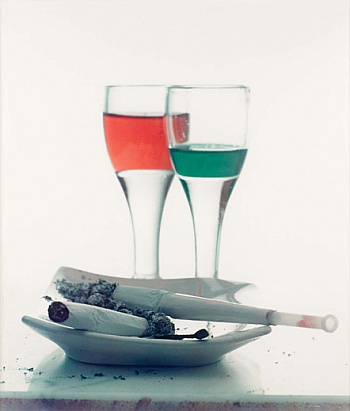 Sotheby's May 2010 auction of Photographs features remarkable works from all periods of the history of photography.
Amongst the highlights of the sale is an exquisite albumen print of the eminent La Villette, rue Asselin, fille publique faisant le quart devant sa porte, 1921 by the famous and acclaimed early 20th century French photographer Eugène Atget.
The modern section comprises an intriguing group of vintage prints from the estate of the German avant-garde photographer Heinz Hajek-Halke. The collection is headed by two vintage silver prints from the Black and White Nudes series (1930-36) and includes a selection of photo-montages and abstract experimental studies from the 1930s and 1940s.
Furthermore, the Property from an Important French Collection includes significant works by such outstanding figure...
Sotheby's May 2010 auction of Photographs features remarkable works from all periods of the history of photography.
Amongst the highlights of the sale is an exquisite albumen print of the eminent La Villette, rue Asselin, fille publique faisant le quart devant sa porte, 1921 by the famous and acclaimed early 20th century French photographer Eugène Atget.
The modern section comprises an intriguing group of vintage prints from the estate of the German avant-garde photographer Heinz Hajek-Halke. The collection is headed by two vintage silver prints from the Black and White Nudes series (1930-36) and includes a selection of photo-montages and abstract experimental studies from the 1930s and 1940s.
Furthermore, the Property from an Important French Collection includes significant works by such outstanding figure... PHOTOBOOKS AUCTION
An important collection of books from the private library of Christer Strömholm, the famous swedish photographer, and many others by
Adams | Alvermann | Albin-Guillot | Blossfeldt | Brassaï | Baitel | Carmi | Carrieri | Cartier-Bresson | Coppens | Doisneau | Frank | Friedlander | Hendrikse | Jiménez | Kippenberger | Man Ray | Petersen | Ruscha | Winogrand | ...
Expert_Dirk Bakker
FOR ALL INFORMATION CONCERNING THE AUCTION + 33 (0)1 49 49 90 31 / 11 / 10
CATALOGUE AVAILABLE UPON REQUEST AND ON OUR WEBSITE WWW.PBA-AUCTIONS.COM
Public viewing
At Pierre Bergé & associés (12 rue Drouot - 75009 Paris)
From Thuesday 17th to Friday 20th November 2009 - 11am-6pm
At Drouot-Richelieu - Salle 10 (9 rue Drouot - 75009 Paris)
Thuesday 24t...
PHOTOBOOKS AUCTION
An important collection of books from the private library of Christer Strömholm, the famous swedish photographer, and many others by
Adams | Alvermann | Albin-Guillot | Blossfeldt | Brassaï | Baitel | Carmi | Carrieri | Cartier-Bresson | Coppens | Doisneau | Frank | Friedlander | Hendrikse | Jiménez | Kippenberger | Man Ray | Petersen | Ruscha | Winogrand | ...
Expert_Dirk Bakker
FOR ALL INFORMATION CONCERNING THE AUCTION + 33 (0)1 49 49 90 31 / 11 / 10
CATALOGUE AVAILABLE UPON REQUEST AND ON OUR WEBSITE WWW.PBA-AUCTIONS.COM
Public viewing
At Pierre Bergé & associés (12 rue Drouot - 75009 Paris)
From Thuesday 17th to Friday 20th November 2009 - 11am-6pm
At Drouot-Richelieu - Salle 10 (9 rue Drouot - 75009 Paris)
Thuesday 24t...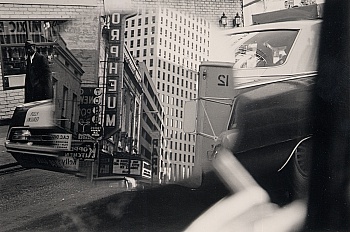 Communiqué de presse de la FRAC d'Aquitaine
« Instantané 2016 invite le public sur la notion de L’habiter à travers les travaux des photographes de la Biennale et une présence artistique nomade dans différents territoires de la ville. Photographier pour se souvenir, pour penser, pour comprendre ? Et de cadrages en cadrages, regarder d’une autre façon les territoires, d’un lieu à un autre lieu. Les photographies nous montrent ce que nous avons pensé, ce que nous avons réalisé, ce que nous avons oublié – en même temps que ce que nous voyons ! Il s’agira cette année, avec le talent des artistes, de voir en quelques images les projets se former et les lieux se transformer. Cela forme notre poin...
Communiqué de presse de la FRAC d'Aquitaine
« Instantané 2016 invite le public sur la notion de L’habiter à travers les travaux des photographes de la Biennale et une présence artistique nomade dans différents territoires de la ville. Photographier pour se souvenir, pour penser, pour comprendre ? Et de cadrages en cadrages, regarder d’une autre façon les territoires, d’un lieu à un autre lieu. Les photographies nous montrent ce que nous avons pensé, ce que nous avons réalisé, ce que nous avons oublié – en même temps que ce que nous voyons ! Il s’agira cette année, avec le talent des artistes, de voir en quelques images les projets se former et les lieux se transformer. Cela forme notre poin...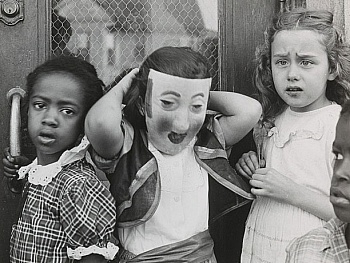 The Association of International Photography Art Dealers (AIPAD) will hold the 32nd edition of The AIPAD Photography Show New York, one of the world’s most important annual photography events, at the Park Avenue Armory in New York City.
Seventy-five of the world’s leading fine art photography galleries will present a wide range of museum-quality work, including contemporary, modern, and 19th-century photographs, as well as photo-based art, video, and new media. The AIPAD Photography Show New York is the longest running and foremost exhibition of fine art photography. The Show will commence with an opening night gala on March 28, 2012, to benefit inMotion, which provides free legal services to low-income women.
AIPAD 2012 will present four new member exhibitors: David Zwirner, New York; Sasha Wo...
The Association of International Photography Art Dealers (AIPAD) will hold the 32nd edition of The AIPAD Photography Show New York, one of the world’s most important annual photography events, at the Park Avenue Armory in New York City.
Seventy-five of the world’s leading fine art photography galleries will present a wide range of museum-quality work, including contemporary, modern, and 19th-century photographs, as well as photo-based art, video, and new media. The AIPAD Photography Show New York is the longest running and foremost exhibition of fine art photography. The Show will commence with an opening night gala on March 28, 2012, to benefit inMotion, which provides free legal services to low-income women.
AIPAD 2012 will present four new member exhibitors: David Zwirner, New York; Sasha Wo...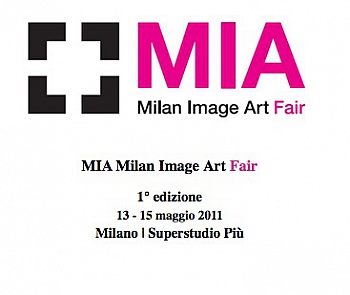 La première édition du Milan Image Art Fair se tiendra cette année à Milan en Italie du 13 au 15 mai 2011. Ce festival dédié à la photographie et à la vidéo est le premier du genre en Italie. 200 exposants sont attendus ; des artistes, des galeries, des laboratoires photographiques, des maisons d'éditions... Le tout sur une surface de 8000 mètres carrés.
Des tables rondes ainsi que des ateliers sont aussi prévus tout au long du week end.
Milan Image Art Fair is pleased to announce its 1st edition of a photography and video art fair in Italy at the creative multi-location Superstudio Più in Milan from Friday, May 13 through Sunday, May 15, 2011.
MIA Fair is the first art fair in Italy devoted exclu...
La première édition du Milan Image Art Fair se tiendra cette année à Milan en Italie du 13 au 15 mai 2011. Ce festival dédié à la photographie et à la vidéo est le premier du genre en Italie. 200 exposants sont attendus ; des artistes, des galeries, des laboratoires photographiques, des maisons d'éditions... Le tout sur une surface de 8000 mètres carrés.
Des tables rondes ainsi que des ateliers sont aussi prévus tout au long du week end.
Milan Image Art Fair is pleased to announce its 1st edition of a photography and video art fair in Italy at the creative multi-location Superstudio Più in Milan from Friday, May 13 through Sunday, May 15, 2011.
MIA Fair is the first art fair in Italy devoted exclu...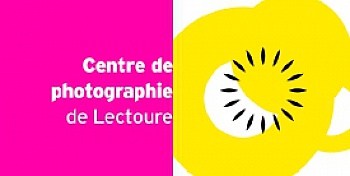 Expositions de Cyrille Weiner, Susanna Majuri, Arno Fabre.
Exposition collective de Shimon Attie, Gabriele Basilico, Brigitte Bauer, Didier BenLoulou, Arnaud Claass, Robin Collyer, Stéphane Couturier, Thibaud Cuisset, Raymond Depardon, Bertrand Desprez, Joël Ducorroy, Georges Dupin, Bernard Faucon, Pierre Faure, Lee Friedlander, Jean-Louis Garnell, Sophie Ristelhueber, Denis Roche,J ean-Pierre Sudre, Eric Van Straaten.
Un parcours d'expositions, rencontres, projections, concerts en pleine nature, balades et randonnées, piqueniques et repas champêtres, dans le Pays Portes de Gascogne du 26 avril au 1er juin 2008.
Pour l’édition 2008 de Cheminements, le Centre de photographie de Lectoure propose, sur le thème « Le paysage comme terrain de jeux », un parcours de qu...
Expositions de Cyrille Weiner, Susanna Majuri, Arno Fabre.
Exposition collective de Shimon Attie, Gabriele Basilico, Brigitte Bauer, Didier BenLoulou, Arnaud Claass, Robin Collyer, Stéphane Couturier, Thibaud Cuisset, Raymond Depardon, Bertrand Desprez, Joël Ducorroy, Georges Dupin, Bernard Faucon, Pierre Faure, Lee Friedlander, Jean-Louis Garnell, Sophie Ristelhueber, Denis Roche,J ean-Pierre Sudre, Eric Van Straaten.
Un parcours d'expositions, rencontres, projections, concerts en pleine nature, balades et randonnées, piqueniques et repas champêtres, dans le Pays Portes de Gascogne du 26 avril au 1er juin 2008.
Pour l’édition 2008 de Cheminements, le Centre de photographie de Lectoure propose, sur le thème « Le paysage comme terrain de jeux », un parcours de qu...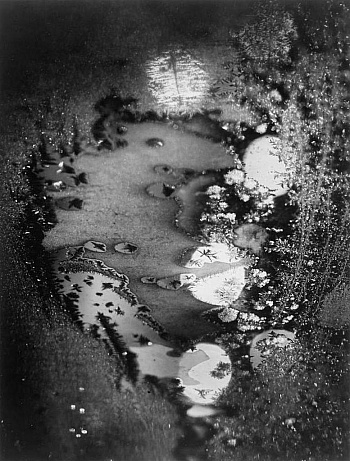 Press Release -
L. Parker Stephenson Photographs is pleased to expand its exploration of the window as a motif in Window Dressing . . . Continued, a group exhibition of vintage and later prints by master 20th century photographers. New work joins a few favorites from the last exhibition.
© Louis Faurer, Accident, New York, c. 1948-1952
Harry Callahan, Chicago, 1948
© John Cohen, Tanager Gallery, Tenth Street, Lois Dodd in Window, 1959
...
Press Release -
L. Parker Stephenson Photographs is pleased to expand its exploration of the window as a motif in Window Dressing . . . Continued, a group exhibition of vintage and later prints by master 20th century photographers. New work joins a few favorites from the last exhibition.
© Louis Faurer, Accident, New York, c. 1948-1952
Harry Callahan, Chicago, 1948
© John Cohen, Tanager Gallery, Tenth Street, Lois Dodd in Window, 1959
...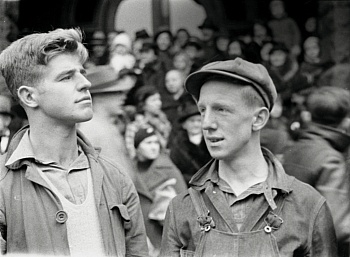 Press release
Portraits. The Fundación MAPFRE Photography Collection can be seen at Fundación MAPFRE’s Sala Recoletos exhibition space in Madrid between 22 June and 3 September 2017. Based on works from the Fundación’s holdings of photography, this exhibition presents a survey of the history of photography with the guiding theme of the portrait, one of the most dynamic genres in the visual arts and a key practice within photography from the origins of the medium.
THE COLLECTION
Nine years ago Fundación MAPFRE launched its collection of photography, an initiative that now coexists with its already well-established drawings collection. The result has been to complement our exhibition programme and contribute to institutional collecting in a way that we considered both necess...
Press release
Portraits. The Fundación MAPFRE Photography Collection can be seen at Fundación MAPFRE’s Sala Recoletos exhibition space in Madrid between 22 June and 3 September 2017. Based on works from the Fundación’s holdings of photography, this exhibition presents a survey of the history of photography with the guiding theme of the portrait, one of the most dynamic genres in the visual arts and a key practice within photography from the origins of the medium.
THE COLLECTION
Nine years ago Fundación MAPFRE launched its collection of photography, an initiative that now coexists with its already well-established drawings collection. The result has been to complement our exhibition programme and contribute to institutional collecting in a way that we considered both necess... Communiqué de presse - Trente ans après l’exposition Hommage à Ferrari qui mettait à l’honneur ces voitures mythiques, la Fondation Cartier pour l’art contemporain présente, sur une proposition de Xavier Barral et Philippe Séclier, l’exposition Autophoto consacrée aux relations entre la photographie et l’automobile. Depuis sa création, l’automobile façonne le paysage, permet la découverte de nouveaux horizons et bouleverse notre conception du temps et de l’espace. À travers près de 400 œuvres de 80 photographes historiques et contemporains originaires des quatre coins du monde tels que Jacques-Henri Lartigue, Lee Friedlander, Rosângela Renno ou Yasuhiro Ishimoto, l’exposition r&e...
Communiqué de presse - Trente ans après l’exposition Hommage à Ferrari qui mettait à l’honneur ces voitures mythiques, la Fondation Cartier pour l’art contemporain présente, sur une proposition de Xavier Barral et Philippe Séclier, l’exposition Autophoto consacrée aux relations entre la photographie et l’automobile. Depuis sa création, l’automobile façonne le paysage, permet la découverte de nouveaux horizons et bouleverse notre conception du temps et de l’espace. À travers près de 400 œuvres de 80 photographes historiques et contemporains originaires des quatre coins du monde tels que Jacques-Henri Lartigue, Lee Friedlander, Rosângela Renno ou Yasuhiro Ishimoto, l’exposition r&e...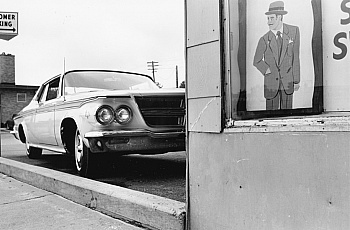 Press release - GALLERY FIFTY ONE TOO is honoured to present ‘The new cars, 1964’ by Lee Friedlander, a series of 33 black-and-white photographs originally made in commission for the American fashion magazine Harper’s Bazaar in 1964.
In the 1960s the release of the new car models of the next year was a big event in America that received extensive media attention. For their November Issue, Harper’s Bazaar granted Lee Friedlander (US, 1934), fairly unknown at that time and clueless about cars, complete freedom for the coverage of the soon-to-be unveiled cars of 1964. But instead of putting the brand new, shiny automobiles in the spotlight, Friedlander turned in surrealistic photographs displaying them in unglamorous locations like parking lots, gas stations and front gardens. The cars are often o...
Press release - GALLERY FIFTY ONE TOO is honoured to present ‘The new cars, 1964’ by Lee Friedlander, a series of 33 black-and-white photographs originally made in commission for the American fashion magazine Harper’s Bazaar in 1964.
In the 1960s the release of the new car models of the next year was a big event in America that received extensive media attention. For their November Issue, Harper’s Bazaar granted Lee Friedlander (US, 1934), fairly unknown at that time and clueless about cars, complete freedom for the coverage of the soon-to-be unveiled cars of 1964. But instead of putting the brand new, shiny automobiles in the spotlight, Friedlander turned in surrealistic photographs displaying them in unglamorous locations like parking lots, gas stations and front gardens. The cars are often o... Communiqué de presse MEP - La famille se retrouve souvent au centre de l’œuvre de beaucoup d’artistes américains, tout comme la photographie est au cœur de leur vie. La tradition photographique américaine est ainsi riche d’un grand nombre de muses qui ont inspiré leur compagnon (Georgia O’Keefe et Alfred Stiegiltz, Charis Wilson et Edward Weston, Eleanor et Harry Callahan, Maria et Lee Friedlander, Bebe et Nicholas Nixon, Edith et Emmet Gowin). Les séries présentées ici, toutes issues de la collection de la MEP, ne relèvent pas de photos de famille au sens commun du terme, c’est-à-dire de récits imagés de la vie familiale. Il s’agit de projets esthétiques qui font partie intégrante de...
Communiqué de presse MEP - La famille se retrouve souvent au centre de l’œuvre de beaucoup d’artistes américains, tout comme la photographie est au cœur de leur vie. La tradition photographique américaine est ainsi riche d’un grand nombre de muses qui ont inspiré leur compagnon (Georgia O’Keefe et Alfred Stiegiltz, Charis Wilson et Edward Weston, Eleanor et Harry Callahan, Maria et Lee Friedlander, Bebe et Nicholas Nixon, Edith et Emmet Gowin). Les séries présentées ici, toutes issues de la collection de la MEP, ne relèvent pas de photos de famille au sens commun du terme, c’est-à-dire de récits imagés de la vie familiale. Il s’agit de projets esthétiques qui font partie intégrante de... Communiqué de presse
La Fondation Cartier pour l’art contemporain présente, à partir du mois d’avril 2017, une exposition consacrée à la relation entre la photographie et l’automobile. Depuis sa création, l’automobile façonne le paysage, permet l’exploration de nouveaux horizons et bouleverse notre conception du temps et de l’espace, offrant un nouveau sujet, un outil et un paradigme pour la photographie. L’exposition réunit près de 400 œuvres de photographes historiques et contemporains qui ont fait de l’automobile leur sujet de prédilection à l’image de Jacques-Henri Lartigue, Ed Ruscha, Lee Friedlander ou encore Jacqueline Hassink ainsi qu’un film regroupant des extraits myt...
Communiqué de presse
La Fondation Cartier pour l’art contemporain présente, à partir du mois d’avril 2017, une exposition consacrée à la relation entre la photographie et l’automobile. Depuis sa création, l’automobile façonne le paysage, permet l’exploration de nouveaux horizons et bouleverse notre conception du temps et de l’espace, offrant un nouveau sujet, un outil et un paradigme pour la photographie. L’exposition réunit près de 400 œuvres de photographes historiques et contemporains qui ont fait de l’automobile leur sujet de prédilection à l’image de Jacques-Henri Lartigue, Ed Ruscha, Lee Friedlander ou encore Jacqueline Hassink ainsi qu’un film regroupant des extraits myt... Depuis plus de cinq décennies, Lee Friedlander (né en 1934 à Aberdeen, Washington, USA), l’un des artistes les plus inventifs et productifs de l'histoire de la photographie, revisite de manière prolifique et magistrale le genre de l’autoportrait. Plus intrusifs qu’introspectifs, ses autoportraits se déclinent à travers un jeu d’ombres, de reflets et de fragmentations. Face caméra ou caméra à la main, nous voyons dans ses photographies, son image surgir, s’imposer, se positionner, se télescoper, se réfracter. La série Self Portrait, son premier livre, publié en 1970 par Haywire Press, complétée par une monographie éditée en 2000 par la Fraenkel Gallery, se prolonge jusqu&...
Depuis plus de cinq décennies, Lee Friedlander (né en 1934 à Aberdeen, Washington, USA), l’un des artistes les plus inventifs et productifs de l'histoire de la photographie, revisite de manière prolifique et magistrale le genre de l’autoportrait. Plus intrusifs qu’introspectifs, ses autoportraits se déclinent à travers un jeu d’ombres, de reflets et de fragmentations. Face caméra ou caméra à la main, nous voyons dans ses photographies, son image surgir, s’imposer, se positionner, se télescoper, se réfracter. La série Self Portrait, son premier livre, publié en 1970 par Haywire Press, complétée par une monographie éditée en 2000 par la Fraenkel Gallery, se prolonge jusqu&...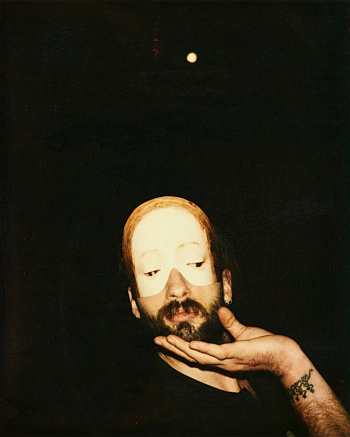 En retournant son objectif sur sa personne, le photographe bouleverse les codes : il peut dès lors voir son appareil comme un pistolet, et la prise de vue comme un défi.
A travers une quarantaine de tirages modernes et contemporains, l’exposition explore la photogénie intense de cet instant de vérité. Berenice Abbott, Paul Keetman, Val Telberg privilégient une approche expérimentale du médium photographique. Lucien Hervé, Arnold Newman, Vivian Maier s’approprient le miroir déjà si présent dans l’autoportrait pictural. À partir de son patronyme familial, Ezra Nahmad compose une autobiographie. Choï, Arno Minkkinen, Wols étudient les possibilités expressives de leurs corps et de leurs visages. Pour Rodolf Hervé, atteint d’une maladie, l’autoportrait est cat...
En retournant son objectif sur sa personne, le photographe bouleverse les codes : il peut dès lors voir son appareil comme un pistolet, et la prise de vue comme un défi.
A travers une quarantaine de tirages modernes et contemporains, l’exposition explore la photogénie intense de cet instant de vérité. Berenice Abbott, Paul Keetman, Val Telberg privilégient une approche expérimentale du médium photographique. Lucien Hervé, Arnold Newman, Vivian Maier s’approprient le miroir déjà si présent dans l’autoportrait pictural. À partir de son patronyme familial, Ezra Nahmad compose une autobiographie. Choï, Arno Minkkinen, Wols étudient les possibilités expressives de leurs corps et de leurs visages. Pour Rodolf Hervé, atteint d’une maladie, l’autoportrait est cat...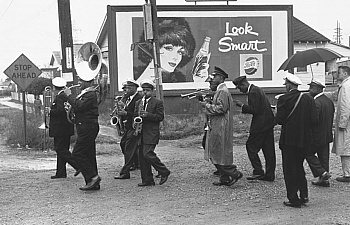 This exhibition brings together Lee Friedlander’s and Milt Hinton’s extraordinary images that capture the people, spirit, and history of jazz. Friedlander’s photographs of New Orleans musicians were made during a series of visits to the city from the late 1950s to the 1990s. Renowned bassist Milt Hinton’s photos were shot over the course of his musical career, which spanned the 20th century, and offer an insider’s view of the jazz scene. Organized by students, including musicians from the Yale Undergraduate Jazz Collective, this show features performances by student, faculty, and community jazz groups throughout its run.
Exhibition organized by Yale University students under the direction of Pamela Franks, Deputy Director for Exhibitions, Programming, and Education and the Interim Seymo...
This exhibition brings together Lee Friedlander’s and Milt Hinton’s extraordinary images that capture the people, spirit, and history of jazz. Friedlander’s photographs of New Orleans musicians were made during a series of visits to the city from the late 1950s to the 1990s. Renowned bassist Milt Hinton’s photos were shot over the course of his musical career, which spanned the 20th century, and offer an insider’s view of the jazz scene. Organized by students, including musicians from the Yale Undergraduate Jazz Collective, this show features performances by student, faculty, and community jazz groups throughout its run.
Exhibition organized by Yale University students under the direction of Pamela Franks, Deputy Director for Exhibitions, Programming, and Education and the Interim Seymo...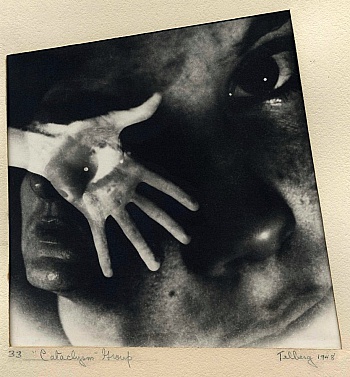 Over these past three decades, the Laurence Miller Gallery has hosted approximately 250 exhibitions, and the list of these shows reflects the evolution of photography from the classic black-and-white medium that dominated much of the 20th Century, to today's large-format color contemporary works, as well as video. The gallery takes great pride in having given many emerging photographers their first one-person exhibitions in New York City, as well as having presented many of photography's greatest masters.
Thirty Years Thirty-One Photographers offers to both the connoisseur and the novice collector many of the most famous images shown along with rare prints from the Gallery's private collection. Here is a sampling:
Peter Bialobrzeski
Paradise Now #32, 2008
40 x 50 inch Type-C print
Editio...
Over these past three decades, the Laurence Miller Gallery has hosted approximately 250 exhibitions, and the list of these shows reflects the evolution of photography from the classic black-and-white medium that dominated much of the 20th Century, to today's large-format color contemporary works, as well as video. The gallery takes great pride in having given many emerging photographers their first one-person exhibitions in New York City, as well as having presented many of photography's greatest masters.
Thirty Years Thirty-One Photographers offers to both the connoisseur and the novice collector many of the most famous images shown along with rare prints from the Gallery's private collection. Here is a sampling:
Peter Bialobrzeski
Paradise Now #32, 2008
40 x 50 inch Type-C print
Editio...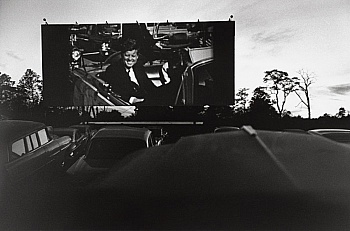 This exhibition examines John F. Kennedy by way of his public—those who elected him to the presidency, provided crucial support during his term in office, and were profoundly affected by his assassination in 1963. Featuring work made during the sixties by artists including Lee Friedlander and Garry Winogrand, as well as key wire photographs from the press, the photographs in this exhibition not only trace the rise of irony, self-reference, and ambiguity in photography but also bear witness to the saturation of Kennedy’s likeness in the public sphere throughout the decade.
...
This exhibition examines John F. Kennedy by way of his public—those who elected him to the presidency, provided crucial support during his term in office, and were profoundly affected by his assassination in 1963. Featuring work made during the sixties by artists including Lee Friedlander and Garry Winogrand, as well as key wire photographs from the press, the photographs in this exhibition not only trace the rise of irony, self-reference, and ambiguity in photography but also bear witness to the saturation of Kennedy’s likeness in the public sphere throughout the decade.
... Lee Friedlander is acknowledged to be one of America's most influential photographers of the last 60 years. His photographs are the result of his genius in structuring and ordering the density of vision. The Mannequin prints appear to be four dimensional, as if the viewer is looking down, forward, up and behind while adding visual memory associations to what Friedlander puts on paper. Lee Friedlander plays what chief photography curator at the Museum of Modern Art, Peter Galassi, calls, "a double game of light and shadow, near and far, which Friedlander wins by knitting the opposing terms together in a riotous and irregular but articulate pattern, making a whole that pulsates with life."
In his most complex and multi-dimensional series in recent years, Lee Friedlander pays homage to the monoli...
Lee Friedlander is acknowledged to be one of America's most influential photographers of the last 60 years. His photographs are the result of his genius in structuring and ordering the density of vision. The Mannequin prints appear to be four dimensional, as if the viewer is looking down, forward, up and behind while adding visual memory associations to what Friedlander puts on paper. Lee Friedlander plays what chief photography curator at the Museum of Modern Art, Peter Galassi, calls, "a double game of light and shadow, near and far, which Friedlander wins by knitting the opposing terms together in a riotous and irregular but articulate pattern, making a whole that pulsates with life."
In his most complex and multi-dimensional series in recent years, Lee Friedlander pays homage to the monoli...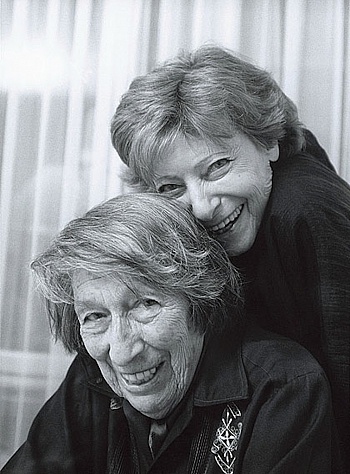 ANITA NEUGEBAUER – photo art basel.
Portrait of the Photographer, Gallery Owner and Collector
‘I wanted to get to know the people who reveal my inner life with their pictures.’
Anita Neugebauer (born in 1916 in Berlin) studied photography at the Contempora – Lehrateliers für neue Werkkunst in Berlin in the 1930s. She is among the avantgarde of photo gallery owners and her collection includes masterpieces classic 20th-century photography. Her gallery photo art basel (1976 – 2004) was one of the first to promote the public presentation of photography at a time when it was not yet being collected as art or exhibited in museums. Neugebauer’s photo exhibitions with Robert Doisneau, Gisèle Freund, Ruth Mayerson Gilbert, René M&aum...
ANITA NEUGEBAUER – photo art basel.
Portrait of the Photographer, Gallery Owner and Collector
‘I wanted to get to know the people who reveal my inner life with their pictures.’
Anita Neugebauer (born in 1916 in Berlin) studied photography at the Contempora – Lehrateliers für neue Werkkunst in Berlin in the 1930s. She is among the avantgarde of photo gallery owners and her collection includes masterpieces classic 20th-century photography. Her gallery photo art basel (1976 – 2004) was one of the first to promote the public presentation of photography at a time when it was not yet being collected as art or exhibited in museums. Neugebauer’s photo exhibitions with Robert Doisneau, Gisèle Freund, Ruth Mayerson Gilbert, René M&aum...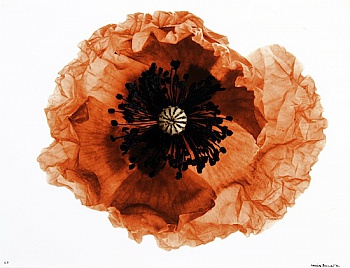 «Selon la nouvelle ligne d’expositions voulue par Gilles Mora, son directeur artistique, le Pavillon Populaire ouvre, pour les deux manifestations à venir, une thématique nouvelle : celle de la place du végétal et de la nature dans la photographie. Elle succède au thème précédent, centré autour de la ville et de ses pulsions dans le temps.
D’une manière identique, ce projet aborde les sujets choisis en proposant une approche résolument ancrée dans le patrimoine photographique, qu’il soit ancien ou contemporain. Car il s’agit de rendre lisibles, pour le public venu de plus en plus nombreux visiter ces expositions, les évolutions, les marqueurs d’un art à la fois populaire mais aussi ...
«Selon la nouvelle ligne d’expositions voulue par Gilles Mora, son directeur artistique, le Pavillon Populaire ouvre, pour les deux manifestations à venir, une thématique nouvelle : celle de la place du végétal et de la nature dans la photographie. Elle succède au thème précédent, centré autour de la ville et de ses pulsions dans le temps.
D’une manière identique, ce projet aborde les sujets choisis en proposant une approche résolument ancrée dans le patrimoine photographique, qu’il soit ancien ou contemporain. Car il s’agit de rendre lisibles, pour le public venu de plus en plus nombreux visiter ces expositions, les évolutions, les marqueurs d’un art à la fois populaire mais aussi ...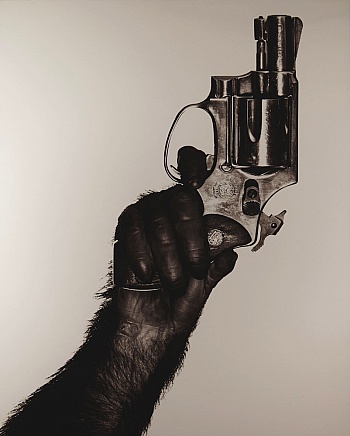 En 2011, le marché de la photographie a continué à susciter un vif intérêt de la part des collectionneurs et institutions européens.
Exposition publique : Salle 9, Mercredi 23 mai de 11h à 18h et Jeudi 24 mai de 11h à 12h
A 14h, la vente du 24 mai à l'Hôtel Drouot, en salle 9, organisée par Maître Le Mouël et Viviane Esders, Expert, présente une section consacrée au XIXe siècle avec deux rares portraits de Julia Margaret Cameron (Mary Hillier) vers 1865.
Trois images emblématiques de Gustave Le Gray dont « la Grande Vague » de 1857.
Sept tirages d’Edouard Denis Baldus sur les « Inondations d’Avignon » en 1856 et la « Tour Magne de Nîmes &r...
En 2011, le marché de la photographie a continué à susciter un vif intérêt de la part des collectionneurs et institutions européens.
Exposition publique : Salle 9, Mercredi 23 mai de 11h à 18h et Jeudi 24 mai de 11h à 12h
A 14h, la vente du 24 mai à l'Hôtel Drouot, en salle 9, organisée par Maître Le Mouël et Viviane Esders, Expert, présente une section consacrée au XIXe siècle avec deux rares portraits de Julia Margaret Cameron (Mary Hillier) vers 1865.
Trois images emblématiques de Gustave Le Gray dont « la Grande Vague » de 1857.
Sept tirages d’Edouard Denis Baldus sur les « Inondations d’Avignon » en 1856 et la « Tour Magne de Nîmes &r...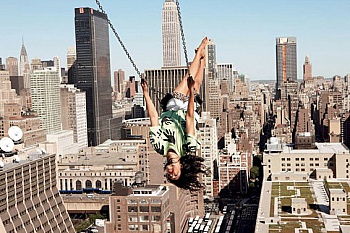 For over thirty years, the New York Times Magazine has presented the myriad possibilities and applications of photography. The New York Times Magazine Photographs is an exhibition that reflects upon and interrogates the very nature of both photography and print magazines at this pivotal moment in their history and evolution.
The exhibition is cocurated by Kathy Ryan, longtime Photo Editor of the Magazine, and Lesley A. Martin, Publisher of Aperture Books. The Aperture-produced exhibition is comprised of eleven individual modules, each of which focuses on a notable project or series of projects that have been presented in the pages of the Magazine.
The featured projects mirror the Magazine's eclecticism, presenting seminal examples of reportage, portraiture, as well as fine art photography. Using visual ...
For over thirty years, the New York Times Magazine has presented the myriad possibilities and applications of photography. The New York Times Magazine Photographs is an exhibition that reflects upon and interrogates the very nature of both photography and print magazines at this pivotal moment in their history and evolution.
The exhibition is cocurated by Kathy Ryan, longtime Photo Editor of the Magazine, and Lesley A. Martin, Publisher of Aperture Books. The Aperture-produced exhibition is comprised of eleven individual modules, each of which focuses on a notable project or series of projects that have been presented in the pages of the Magazine.
The featured projects mirror the Magazine's eclecticism, presenting seminal examples of reportage, portraiture, as well as fine art photography. Using visual ...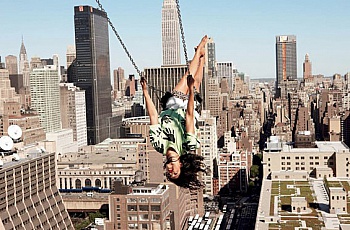 For over thirty years, the New York Times Magazine has presented the myriad possibilities and applications of photography. The New York Times Magazine Photographs is an exhibition that reflects upon and interrogates the very nature of both photography and print magazines at this pivotal moment in their history and evolution.
The exhibition is cocurated by Kathy Ryan, longtime Photo Editor of the Magazine, and Lesley A. Martin, Publisher of Aperture Books. The Aperture-produced exhibition is comprised of eleven individual modules, each of which focuses on a notable project or series of projects that have been presented in the pages of the Magazine. The featured projects mirror the Magazine’s eclecticism, presenting seminal examples of reportage, portraiture, as well as fine art photography. Using visual mate...
For over thirty years, the New York Times Magazine has presented the myriad possibilities and applications of photography. The New York Times Magazine Photographs is an exhibition that reflects upon and interrogates the very nature of both photography and print magazines at this pivotal moment in their history and evolution.
The exhibition is cocurated by Kathy Ryan, longtime Photo Editor of the Magazine, and Lesley A. Martin, Publisher of Aperture Books. The Aperture-produced exhibition is comprised of eleven individual modules, each of which focuses on a notable project or series of projects that have been presented in the pages of the Magazine. The featured projects mirror the Magazine’s eclecticism, presenting seminal examples of reportage, portraiture, as well as fine art photography. Using visual mate...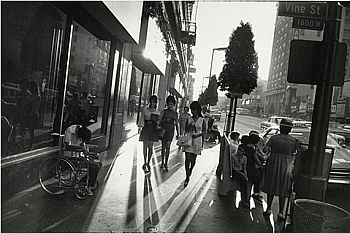 American photography forms an extensive and simultaneously top-quality focal point in the collection, of which a selected overview is now being exhibited for the first time. The main interest of young photographers, who have been examining changes in political, social and ecological aspects of everyday American life since the late 1960s, has been the American social landscape. Oscillating between individual world views, analytical stock-taking and conceptual strategies, they have developed new stylistic devices that define a pictorial style perceived as genuinely American.
Whereas Lee Friedlander, Garry Winogrand, Robert Adams, Lewis Baltz and Larry Clark, who are now considered classical modern photographers, have remained true to black-and-white photography, William Eggleston and Stephen Shore in particular have...
American photography forms an extensive and simultaneously top-quality focal point in the collection, of which a selected overview is now being exhibited for the first time. The main interest of young photographers, who have been examining changes in political, social and ecological aspects of everyday American life since the late 1960s, has been the American social landscape. Oscillating between individual world views, analytical stock-taking and conceptual strategies, they have developed new stylistic devices that define a pictorial style perceived as genuinely American.
Whereas Lee Friedlander, Garry Winogrand, Robert Adams, Lewis Baltz and Larry Clark, who are now considered classical modern photographers, have remained true to black-and-white photography, William Eggleston and Stephen Shore in particular have... Lorsque les premières cabines de photomaton furent installées à Paris en 1928, les surréalistes en firent un usage intensif et compulsif. En quelques minutes, et pour une somme modique, la machine leur offrait, dans le domaine du portrait, une expérience similaire à celle de l’écriture automatique. Depuis, des générations d’artistes ont été fascinées par le principe du photomaton. De Andy Warhol à Arnulf Rainer, en passant par Thomas Ruff, Cindy Sherman, ou Gillian Wearing, ils sont nombreux à s’être emparé du photomaton pour jouer avec leur identité, raconter des histoires, ou faire des mondes.
Derrière le rideau - L’Esthétique Photomaton, une création...
Lorsque les premières cabines de photomaton furent installées à Paris en 1928, les surréalistes en firent un usage intensif et compulsif. En quelques minutes, et pour une somme modique, la machine leur offrait, dans le domaine du portrait, une expérience similaire à celle de l’écriture automatique. Depuis, des générations d’artistes ont été fascinées par le principe du photomaton. De Andy Warhol à Arnulf Rainer, en passant par Thomas Ruff, Cindy Sherman, ou Gillian Wearing, ils sont nombreux à s’être emparé du photomaton pour jouer avec leur identité, raconter des histoires, ou faire des mondes.
Derrière le rideau - L’Esthétique Photomaton, une création...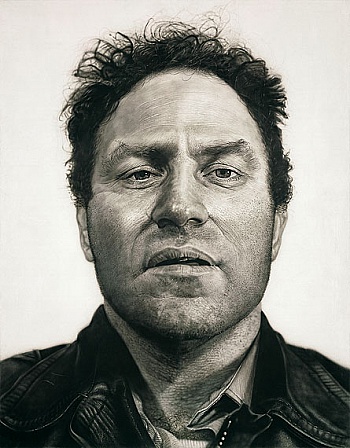 Hyper Real – Art and America around 1970, the largest exhibition project to date in the 20-year history of the Ludwig Forum, forms a visual memorial to the American way of life. The exhibition combines 250 works from 100 artists, never before seen together and in this abundance in Germany. Dr. Brigitte Franzen and Anna Sophia Schultz have located photorealism around 1970, temporally, aesthetically, and socially, in the context of parallel artistic currents, such as Pop art, conceptual art, land art and the work of the “New Topographics.” Events such as the Vietnam War, the Civil Rights Movement and the Oil Crisis formed the historical context of the artistic debates in this period.
Almost concurrently with the photorealist artists, photographers also began to address the excessive visual worlds o...
Hyper Real – Art and America around 1970, the largest exhibition project to date in the 20-year history of the Ludwig Forum, forms a visual memorial to the American way of life. The exhibition combines 250 works from 100 artists, never before seen together and in this abundance in Germany. Dr. Brigitte Franzen and Anna Sophia Schultz have located photorealism around 1970, temporally, aesthetically, and socially, in the context of parallel artistic currents, such as Pop art, conceptual art, land art and the work of the “New Topographics.” Events such as the Vietnam War, the Civil Rights Movement and the Oil Crisis formed the historical context of the artistic debates in this period.
Almost concurrently with the photorealist artists, photographers also began to address the excessive visual worlds o...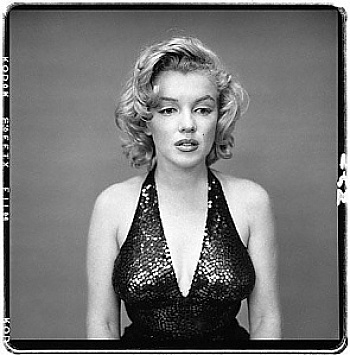 p { margin-bottom: 0.21cm; }
This is the gallery's second annual Great Photographs of the 20th Century exhibition, following the success of last year's exhibition titled Staged and Startled. This recurring program is an opportunity for collectors and the public to view important and rare vintage photographs that would usually be restricted to a museum setting.
This year's exhibition, From the Street, is an examination of street photography in works ranging from the 1930s to the present. The exhibition will include iconic examples of the genre, such as Robert Frank's Rodeo, New York City (1954), Lisette Model's Promenade des Anglais, Nice (1934), and Lee Friedlander's Newark, N.J. (1962), alongside rarely exhibited photographs by masters of photography such as Richard Avedon and Garry Winogrand. The exhibition uniquel...
p { margin-bottom: 0.21cm; }
This is the gallery's second annual Great Photographs of the 20th Century exhibition, following the success of last year's exhibition titled Staged and Startled. This recurring program is an opportunity for collectors and the public to view important and rare vintage photographs that would usually be restricted to a museum setting.
This year's exhibition, From the Street, is an examination of street photography in works ranging from the 1930s to the present. The exhibition will include iconic examples of the genre, such as Robert Frank's Rodeo, New York City (1954), Lisette Model's Promenade des Anglais, Nice (1934), and Lee Friedlander's Newark, N.J. (1962), alongside rarely exhibited photographs by masters of photography such as Richard Avedon and Garry Winogrand. The exhibition uniquel... In the context of the 4th European Month of Photography Berlin, which is presented for the first time as a themed event, the Kunsthandel Jörg Maaß is pleased to announce the exhibition “Street Photography. Selected Works from Six Decades”.
The exhibition centers around vintage prints which document life on the streets through the decades. This wide overview begins in Europe in the early 1930s with selected black and white photographs from Ilse Bing, Bill Brandt, Brassai, Cartier-Bresson and others.
American Street Photography of the 1940s to the 1970s is represented by works from Harry Callahan, Louis Fauer, Andreas Feininger, Robert Frank, Leon Levinstein, Ray K. Metzker, Erika Stone and Weegee. The exhibition closes with color prints of iconic examples of Street Photography, such as ...
In the context of the 4th European Month of Photography Berlin, which is presented for the first time as a themed event, the Kunsthandel Jörg Maaß is pleased to announce the exhibition “Street Photography. Selected Works from Six Decades”.
The exhibition centers around vintage prints which document life on the streets through the decades. This wide overview begins in Europe in the early 1930s with selected black and white photographs from Ilse Bing, Bill Brandt, Brassai, Cartier-Bresson and others.
American Street Photography of the 1940s to the 1970s is represented by works from Harry Callahan, Louis Fauer, Andreas Feininger, Robert Frank, Leon Levinstein, Ray K. Metzker, Erika Stone and Weegee. The exhibition closes with color prints of iconic examples of Street Photography, such as ...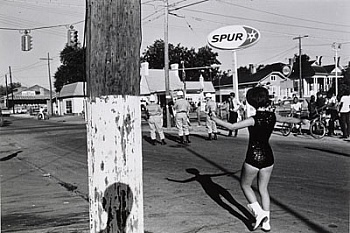 Every year since 1965, the Cité internationale des Arts has offered an artistin-residence programme to artists from all over the world. Thousands of artists – many of them destined for brilliant international careers – have stayed here, enjoying conditions that foster both the development of their talent and interaction with the French arts scene. A list of former Cité des Arts residents is a sure testimonial of the real support It has given to contemporary artists.
Our forthcoming exhibition focuses on a group of 15 photographers whose works form part of the MEP collection. It brings together several generations and many nationalities, the common bond between them being their residence at the Cité des Arts. The length of their stays varied from three months to two years, and for many ...
Every year since 1965, the Cité internationale des Arts has offered an artistin-residence programme to artists from all over the world. Thousands of artists – many of them destined for brilliant international careers – have stayed here, enjoying conditions that foster both the development of their talent and interaction with the French arts scene. A list of former Cité des Arts residents is a sure testimonial of the real support It has given to contemporary artists.
Our forthcoming exhibition focuses on a group of 15 photographers whose works form part of the MEP collection. It brings together several generations and many nationalities, the common bond between them being their residence at the Cité des Arts. The length of their stays varied from three months to two years, and for many ... Depuis 1965, la Cité internationale des Arts accueille en résidence des artistes du monde entier, dans toutes les disciplines. Près de 15 500 artistes, souvent à l’aube d’une carrière internationale prestigieuse, ont ainsi bénéficié d’un séjour dans des conditions propres à favoriser l’expression de leur talent et la création d’échanges avec la scène artistique française. Il suffit de parcourir la liste des anciens résidents de la Cité internationale des Arts pour prendre la mesure du soutien apporté par la Fondation à la création contemporaine.
L’exposition De la Cité internationale des Arts à la Maison Européenne de la Photograp...
Depuis 1965, la Cité internationale des Arts accueille en résidence des artistes du monde entier, dans toutes les disciplines. Près de 15 500 artistes, souvent à l’aube d’une carrière internationale prestigieuse, ont ainsi bénéficié d’un séjour dans des conditions propres à favoriser l’expression de leur talent et la création d’échanges avec la scène artistique française. Il suffit de parcourir la liste des anciens résidents de la Cité internationale des Arts pour prendre la mesure du soutien apporté par la Fondation à la création contemporaine.
L’exposition De la Cité internationale des Arts à la Maison Européenne de la Photograp... This exhibition is based on the idea of 'infatuations' that can affect both photographers and exhibition curators. People often suppose that museums make choices as objectively as possible, but actually this is far from from the truth. Just as an artist may feel physically and emotionally attracted to a particular subject, the collector or curator might also have a ‘crush’ on a certain work. The term ‘the infatuated camera’ comes from the title of a 1971 film by Ed van der Elsken, De Verliefde Camera, a compilation of travel clips previously filmed by him. This exhibition has been assembled in a similar way; photographs and film rushes from the present day contrast with excerpts and impressions from the previous century. Works have been seemingly casually arranged according to summery themes: hang...
This exhibition is based on the idea of 'infatuations' that can affect both photographers and exhibition curators. People often suppose that museums make choices as objectively as possible, but actually this is far from from the truth. Just as an artist may feel physically and emotionally attracted to a particular subject, the collector or curator might also have a ‘crush’ on a certain work. The term ‘the infatuated camera’ comes from the title of a 1971 film by Ed van der Elsken, De Verliefde Camera, a compilation of travel clips previously filmed by him. This exhibition has been assembled in a similar way; photographs and film rushes from the present day contrast with excerpts and impressions from the previous century. Works have been seemingly casually arranged according to summery themes: hang...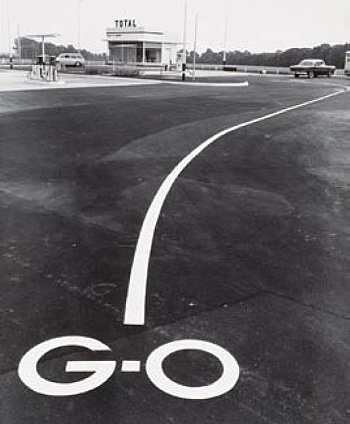 “On the Road”, une sélection de tirages issus des collections de la MEP et de la Médiathèque de l’Architecture et du Patrimoine autour du thème de la route.
Le voyage, ce n’est pas arriver, c’est partir. Les photographes adorent le voyage. La saveur de l’inconnu, du mouvement, d’ici ou d’ailleurs.
“On the Road” réunit les visions oniriques de photographes majeurs du 20ème siècle qui rendent compte de ce moment privilégié de la transition. Il n’était pas évident d’amener vingt-cinq auteurs dans sur la plate-forme d’un camion suggéré par Jack Kerouac sur les routes de la poésie. La joie, la force, la suggestion qui s’en dégagent invite...
“On the Road”, une sélection de tirages issus des collections de la MEP et de la Médiathèque de l’Architecture et du Patrimoine autour du thème de la route.
Le voyage, ce n’est pas arriver, c’est partir. Les photographes adorent le voyage. La saveur de l’inconnu, du mouvement, d’ici ou d’ailleurs.
“On the Road” réunit les visions oniriques de photographes majeurs du 20ème siècle qui rendent compte de ce moment privilégié de la transition. Il n’était pas évident d’amener vingt-cinq auteurs dans sur la plate-forme d’un camion suggéré par Jack Kerouac sur les routes de la poésie. La joie, la force, la suggestion qui s’en dégagent invite... Lee Friedlander est un des photographes américains les plus influents de la seconde moitié du vingtième siècle. Ses séries d'autoportraits et de paysages urbains réalisées à la fin des années 1960 et début 1970 le font connaître et lui apportent un soutien critique et public.
À partir de 1972, le photographe tourne son regard vers la nature, pas dans son état sauvage, mais celle apprivoisée par l'homme. En 1975, il publie le portfolio "Flowers", qui regroupe 15 tirages noir et blanc, tous montées sur carton et présentées dans un coffret en tissu bleu.
Réalisées entre 1972 et 1974, ces images portent leur attention sur les fleurs et plantes qui ponctuent notre paysage quotidie...
Lee Friedlander est un des photographes américains les plus influents de la seconde moitié du vingtième siècle. Ses séries d'autoportraits et de paysages urbains réalisées à la fin des années 1960 et début 1970 le font connaître et lui apportent un soutien critique et public.
À partir de 1972, le photographe tourne son regard vers la nature, pas dans son état sauvage, mais celle apprivoisée par l'homme. En 1975, il publie le portfolio "Flowers", qui regroupe 15 tirages noir et blanc, tous montées sur carton et présentées dans un coffret en tissu bleu.
Réalisées entre 1972 et 1974, ces images portent leur attention sur les fleurs et plantes qui ponctuent notre paysage quotidie...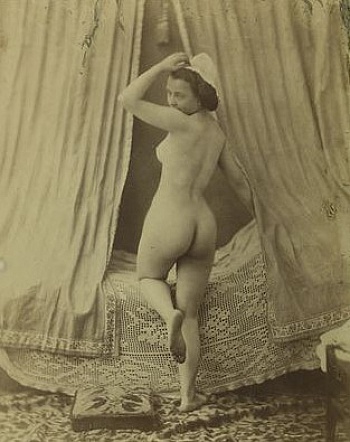 ...
...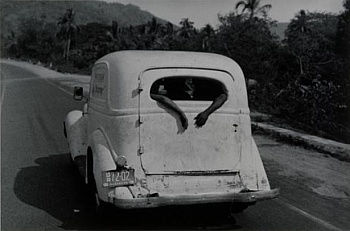 La Maison Européenne de la Photographie présente “On the Road”, une sélection de tirages issus des collections de la MEP et de la Médiathèque de l’Architecture et du Patrimoine autour du thème de la route.
Le voyage, ce n’est pas arriver, c’est partir. Les photographes adorent le voyage. La saveur de l’inconnu, du mouvement, d’ici ou d’ailleurs.
“On the Road” réunit les visions oniriques de photographes majeurs du 20ème siècle qui rendent compte de ce moment privilégié de la transition. Il n’était pas évident d’amener vingt-cinq auteurs dans sur la plate-forme d’un camion suggéré par Jack Kerouac sur les routes de la poésie. La jo...
La Maison Européenne de la Photographie présente “On the Road”, une sélection de tirages issus des collections de la MEP et de la Médiathèque de l’Architecture et du Patrimoine autour du thème de la route.
Le voyage, ce n’est pas arriver, c’est partir. Les photographes adorent le voyage. La saveur de l’inconnu, du mouvement, d’ici ou d’ailleurs.
“On the Road” réunit les visions oniriques de photographes majeurs du 20ème siècle qui rendent compte de ce moment privilégié de la transition. Il n’était pas évident d’amener vingt-cinq auteurs dans sur la plate-forme d’un camion suggéré par Jack Kerouac sur les routes de la poésie. La jo...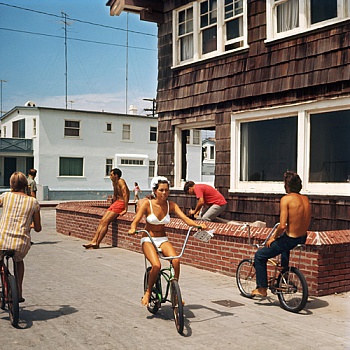 L.A. ou si vous préférez Los Angeles, la cité des anges... et des démons. Pour quelques chanceux, L.A. est synonyme de soleil, de plage, de piscine, de corps sains et bronzés. Pour les autres, L.A. n'est souvent qu'une concentration d'autoroutes encombrées, de pollutions et de peurs de toutes sortes. C'est une ville sans centre et sans âme... Là-haut, dans les cieux, règnent les stars d'Hollywood; mais ici-bas, les habitants craignent un nouveau tremblement de terre ou le déclenchement d'émeutes. Rêve ou cauchemar? Réalité ou fiction? La vérité sur ce lieu mythique et fascinant se situe peut-être entre les deux.
Los Angeles, ville à multiples facettes, est adorée des photographes de tout...
L.A. ou si vous préférez Los Angeles, la cité des anges... et des démons. Pour quelques chanceux, L.A. est synonyme de soleil, de plage, de piscine, de corps sains et bronzés. Pour les autres, L.A. n'est souvent qu'une concentration d'autoroutes encombrées, de pollutions et de peurs de toutes sortes. C'est une ville sans centre et sans âme... Là-haut, dans les cieux, règnent les stars d'Hollywood; mais ici-bas, les habitants craignent un nouveau tremblement de terre ou le déclenchement d'émeutes. Rêve ou cauchemar? Réalité ou fiction? La vérité sur ce lieu mythique et fascinant se situe peut-être entre les deux.
Los Angeles, ville à multiples facettes, est adorée des photographes de tout...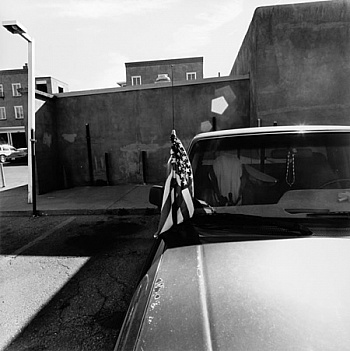 Andrew Smith Gallery at 203 W. San Francisco St., Santa Fe, NM 87501 opens an exhibition of approximately fifty photographs taken in New Mexico by the American Master of Photography, Lee Friedlander on Oct. 31, 2008.
Mr. Friedlander will be in the gallery for the opening reception on Friday, Oct. 31, 2008 from 5 to 7 p.m. to meet the public and sign copies of his newest publication, Lee Friedlander: New Mexico, published by Radius Books, Santa Fe, NM (2008). The exhibit continues through January 15, 2009.
Lee Friedlander ranks as possibly America's greatest photographer. For over fifty years he has prodigiously photographed what he calls the "American social landscape" with an unflinching eye for realism. Transcending mere documents, his photographs are the result of his artistic geniu...
Andrew Smith Gallery at 203 W. San Francisco St., Santa Fe, NM 87501 opens an exhibition of approximately fifty photographs taken in New Mexico by the American Master of Photography, Lee Friedlander on Oct. 31, 2008.
Mr. Friedlander will be in the gallery for the opening reception on Friday, Oct. 31, 2008 from 5 to 7 p.m. to meet the public and sign copies of his newest publication, Lee Friedlander: New Mexico, published by Radius Books, Santa Fe, NM (2008). The exhibit continues through January 15, 2009.
Lee Friedlander ranks as possibly America's greatest photographer. For over fifty years he has prodigiously photographed what he calls the "American social landscape" with an unflinching eye for realism. Transcending mere documents, his photographs are the result of his artistic geniu... Alexei Brodovitch - Diane Arbus - Lee Friedlander - Lisette Model - Louis Faurer - Richard Avedon - Robert Frank - Sid Grossman - Ted Croner - Weegee - William Klein
Between the late 1930s and the early 1960s a group of young photographers living and working in New York City redefined street photography.
This group of artists became known as The New York School.
These photographers documented the post war energy and exotic chaos of New York City as it evolved from the crisis years of the Great
Depression and the Second World War through to the social turbulence of the early seventies. Most of them worked on magazines but it was their personal work that stood them apart.
They captured the choreography of the city from the sidewalks of downtown, to the intensity of Times Square, the isolation and elegance of the arc...
Alexei Brodovitch - Diane Arbus - Lee Friedlander - Lisette Model - Louis Faurer - Richard Avedon - Robert Frank - Sid Grossman - Ted Croner - Weegee - William Klein
Between the late 1930s and the early 1960s a group of young photographers living and working in New York City redefined street photography.
This group of artists became known as The New York School.
These photographers documented the post war energy and exotic chaos of New York City as it evolved from the crisis years of the Great
Depression and the Second World War through to the social turbulence of the early seventies. Most of them worked on magazines but it was their personal work that stood them apart.
They captured the choreography of the city from the sidewalks of downtown, to the intensity of Times Square, the isolation and elegance of the arc... Exposition réalisée avec des élèves du lycée agricole de Mirande.
Lieu : Centre de photographie de Lectoure
OEuvres de Shimon Attie, Gabriele Basilico, Brigitte Bauer, Didier Ben Loulou, Arnaud Claass, Robin Collyer, Stéphane Couturier, Thibaut Cuisset, Raymond Depardon, Bertrand Desprez, Joël Ducorroy, George Dupin, Bernard Faucon, Pierre Faure, Lee Friedlander, Jean-Louis Garnell, Sophie Ristelhueber, Denis Roche, Jean-Pierre Sudre, Eric Van Straaten.
Cette exposition est l'oeuvre d’une classe de première année de bac-pro « Conduite et gestion de l’exploitation agricole» du lycée agricole deMirande. Elle s’inscrit dans un projet expérimental de sensibilisation à l’art contemporain. Durant un trimestr...
Exposition réalisée avec des élèves du lycée agricole de Mirande.
Lieu : Centre de photographie de Lectoure
OEuvres de Shimon Attie, Gabriele Basilico, Brigitte Bauer, Didier Ben Loulou, Arnaud Claass, Robin Collyer, Stéphane Couturier, Thibaut Cuisset, Raymond Depardon, Bertrand Desprez, Joël Ducorroy, George Dupin, Bernard Faucon, Pierre Faure, Lee Friedlander, Jean-Louis Garnell, Sophie Ristelhueber, Denis Roche, Jean-Pierre Sudre, Eric Van Straaten.
Cette exposition est l'oeuvre d’une classe de première année de bac-pro « Conduite et gestion de l’exploitation agricole» du lycée agricole deMirande. Elle s’inscrit dans un projet expérimental de sensibilisation à l’art contemporain. Durant un trimestr...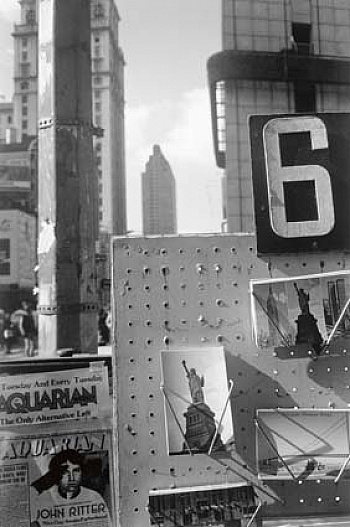 Comme Walker Evans et Robert Frank, Lee Friedlander capte l'ordinaire de la ville et du quotidien américains, les devantures des magasins, les annonces publicitaires, la télévision, les voitures, la vie urbaine dans son ensemble. L'influence pop, les facéties spontanées et les innovations formelles marquent ses débuts de photographe dans les années 1950 et caractériseront toujours son travail. Toutefois, à l'orée des années 1970, sa sensibilité, son style et ses sujets s'élargissent. Un flot continu d'observations nourrit ses photographies d'où se dégagent charme et lyrisme. À l'affût des variations subtiles des formes et de la lumière, il produit des images urbaines richement descriptives, révélant l'énergie incontrôlable de la ville et dévoilant le pouvoir de la photographie à transformer ce qui...
Comme Walker Evans et Robert Frank, Lee Friedlander capte l'ordinaire de la ville et du quotidien américains, les devantures des magasins, les annonces publicitaires, la télévision, les voitures, la vie urbaine dans son ensemble. L'influence pop, les facéties spontanées et les innovations formelles marquent ses débuts de photographe dans les années 1950 et caractériseront toujours son travail. Toutefois, à l'orée des années 1970, sa sensibilité, son style et ses sujets s'élargissent. Un flot continu d'observations nourrit ses photographies d'où se dégagent charme et lyrisme. À l'affût des variations subtiles des formes et de la lumière, il produit des images urbaines richement descriptives, révélant l'énergie incontrôlable de la ville et dévoilant le pouvoir de la photographie à transformer ce qui...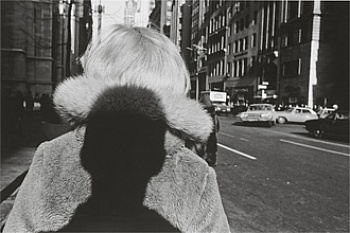 "Full of wit and pleasure, Lee Friedlander's photography is also full of challenges. Fact and fiction, beauty and comedy- he has embraced all of these at once, scrambling our notions of what a photograph can be. And his disciplined extravagance has brought new amplitude to the old idea of 'a body of work."
(Peter Galassi, Museum of Modern Art, New York)
Friedlander at MoMA
The Museum of Modern Art began to collect and exhibit Friedlander's work in 1964. Since "New Documents", MoMA has presented four solo Friedlander exhibitions- "Gatherings" (1972); "Lee Friedlander" (organized in 1974 for an extended tour that introduced Friedlander to a broad international audience); "Nudes" (1991); and "Letters from the People" (1994)- and has included his photographs in numerous group exhibitions and collection installations. ...
"Full of wit and pleasure, Lee Friedlander's photography is also full of challenges. Fact and fiction, beauty and comedy- he has embraced all of these at once, scrambling our notions of what a photograph can be. And his disciplined extravagance has brought new amplitude to the old idea of 'a body of work."
(Peter Galassi, Museum of Modern Art, New York)
Friedlander at MoMA
The Museum of Modern Art began to collect and exhibit Friedlander's work in 1964. Since "New Documents", MoMA has presented four solo Friedlander exhibitions- "Gatherings" (1972); "Lee Friedlander" (organized in 1974 for an extended tour that introduced Friedlander to a broad international audience); "Nudes" (1991); and "Letters from the People" (1994)- and has included his photographs in numerous group exhibitions and collection installations. ...